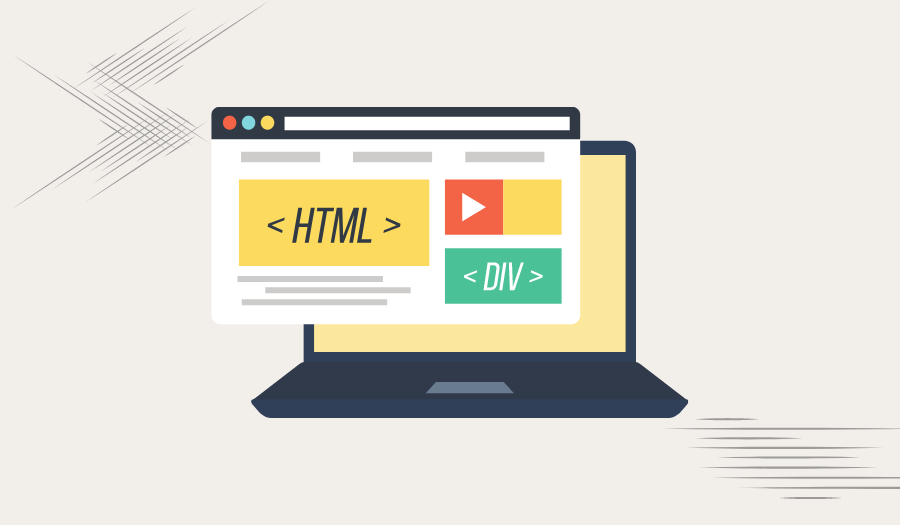
Redesigning your website is a complex and important task. Your website is often the first impression that your brand makes on new potential customers, so you want to make sure it’s engaging, informative, and easy to use. As you consider what your new site will look like, ask yourself these six questions to keep your visitors at the center of your design.
Is the site easy to navigate?
Ask this question when determining which pages to include on your new site and how to arrange them.
The user experience (UX) should be a top consideration when redesigning your website. Users should not have to guess where to find the information they seek. Navigating the new site should be intuitive, and this requires a logical site structure and a limited number of navigation items. For example, if you have multiple pages that discuss the various industries you serve, it’s best to group these under a single navigation item, such as “industries we serve,” rather than group them with the services you provide under a navigation item labeled “services.” Limiting navigation items and maintaining a logical structure helps the user easily process the information available. Google also gives stronger search engine optimization (SEO) value to websites that have a strong hierarchal structure. To learn more, see our article, “Optimizing Your Navigation Menu.”
Can users follow the buyer’s journey to accomplish what they want?
Ask this question when writing content for and designing your new site.
Today’s consumers can be well informed about a product or service before they ever land on your website. Your website should cater to those who are informed and close to buying as well as those who need to learn more about what you do. Incorporating the buyer’s journey into your website design can help you personalize the structure, layout, and design elements of the site so it better resonates with your audience.
Use calls to action (CTAs) throughout the site to guide users from one step of the buyer’s journey to the next. A user who lands on the homepage may want an overview of your services, or they may already know what you do and be ready to get in touch immediately. By providing calls to action that prompt users to learn more about your products or services and the benefits they provide as well as those that ask users to reach out to a sales rep, you can create easy pathways for both types of site visitors. Being mindful of each stage of the buyer’s journey, wherein the journey a user may be when visiting a given page, and what content they will need is critical to designing a successful website.
Does it represent my brand?
Ask this question when selecting the visual elements of your new site.
Your website serves as your #1 salesperson and the digital face of your company. Using intentional, cohesive brand elements on the site can communicate the culture of your business and showcase what sets it apart from competitors. Designing a new website is a great opportunity to audit your visual brand elements. The following items are the baseline visual elements needed to have a website that reflects your brand.
- A cohesive color scheme that includes a primary and secondary palette to emphasize important areas of the site and tie design elements together
- Be sure to implement proper contrast ratios to ensure WCAG conformance
- Up-to-date, relevant images that accurately represent your style, services, and products
- Think about your brand’s style, and ask what types of images best reflect it (for example, landscapes, photographs of people, or illustrations)
- One or two font pairings that are consistent with your logo, easy to read, and web compatible.
Does the site look trustworthy?
Ask this question when designing and writing content for your new site.
An effective website cultivates relationships with your customers. Design elements should not only make the site beautiful but also reinforce credibility and trustworthiness. Featuring a clean, simple layout and reducing clutter can help the site feel more professional and welcoming. Authentic images or videos can help create a realistic expectation of your services or products and help the user get to know you better.
When creating written content, ensure your homepage immediately tells users where they are and gives an overview of what your company does. Because some users will not go straight to your homepage and instead will land on an internal page via organic search, these pages also need to provide essential information. Make sure they quickly inform users what they are about, keeping in mind they may already be knowledgeable about your industry or the solution you provide since they arrived on your site via search.
Will certain elements slow down the site?
Ask this question prior to site development.
Eye-catching images, videos, animations, and graphics can improve the appearance and usability of a site, but if not built and formatted correctly, they can also slow it down. Fast page load speeds are key to reducing bounce rates and increasing conversions. Moreover, it’s no secret that Google considers page load speed when ranking sites in search results. There are many ways to decrease your page load speed, including minifying JS and CSS, optimizing images and videos, and implementing caching techniques.
Is the design responsive?
Ask this question during development.
With more web traffic than ever coming from mobile devices, a mobile-friendly website is essential. A responsive design allows the content to appear and function as intended across multiple screen sizes. While a mobile-friendly site is important for the UX, it also impacts SEO. Google has made it clear that responsiveness is a ranking factor and that it only crawls the mobile versions of sites (not the desktop version) for indexing. Optimizing your website for mobile use is an important part of SEO strategy.
This list of questions provides a great starting point for designing your new website with the user in mind. Use it to create a useful, beautiful, and optimized website that showcases your brand, engages users, and generates new business.
For more insights on web design, be sure to check out other posts on our blog where we cover all things web design and development.

